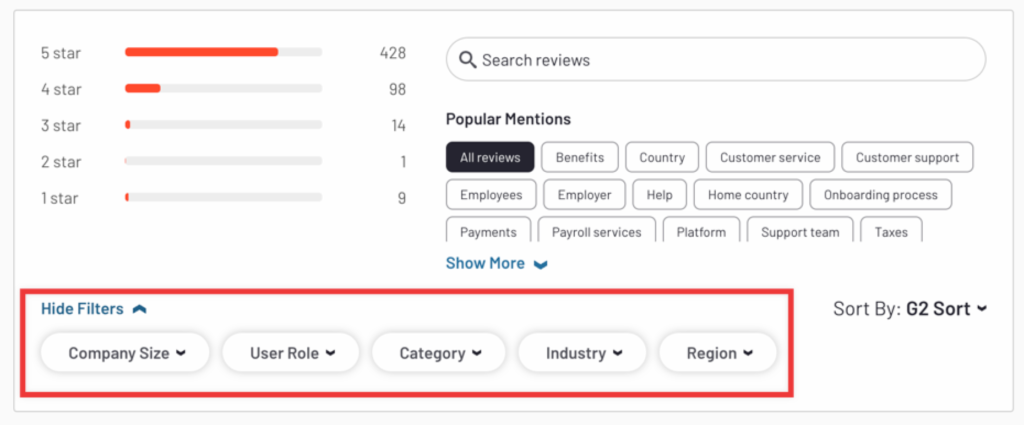Hi, I’m James. Thanks for checking out Building Momentum: a newsletter to help startup founders and marketers accelerate SaaS growth through product marketing.
Time flies when you’re busy – and with the current environment, you’re probably stacked right now. I know, I feel ya.
BUT… please don’t forget sight of why we’re all here, doing our jobs: serving our customers.
If you’ve got new product GTMs to plan, a new deck to deliver, and positioning to polish, it’s very tempting to let your existing customer knowledge and assumptions carry you through.
Of course, the opportunity cost is that the gap between you and your customer gets slightly bigger, every week.
Here are some very light-touch, low-effort ways that you can put into practice this week.
In this post:
Send a personalized email to a new customer
If you don’t have an automated win/loss interview process set up already, you’re missing out! But if you promise to set one up, you can do this in the meantime.
You hopefully have access to a list of recent won deals and new customer signups, whether that’s in Salesforce, Slack, or Hubspot.
Take a look through, familiarise yourself with the types of customers you’re winning – then select a few customers to email.
Say hi, introduce yourself, and ask three pointed questions:
- What made you sign up with us?
- How did we compare to other solutions out there?
- Is there any initial feedback about our marketing, sales, and product experience that you think we should know?
You’ll get tons of interesting thoughts that will help you build more relevant marketing and sales content, understand your differentiators, and find opportunities to improve the funnel.
Check who’s engaging with your company’s LinkedIn account, and research their profiles
If your company uses LinkedIn as a social channel, you probably get a lot of likes and comments on those posts.
Maybe they’re customers, maybe they’re prospects, maybe they’re just interested in your product.
Desk research through LinkedIn snooping is a great and quick way to conduct a temperature check on what’s happening in your space.
Click through a few profiles and focus on:
- Job titles, types of companies, and how they describe their role
- Any personal intros, interests, and past experience
- Their other activity – comments on other posts, companies they follow, etc
You’ll build a more resilient picture of the people in your market and understand them more as people, not just an amorphous blob.
Create a quick poll on Twitter to gather feedback on a particular product feature or pricing
Similarly if your company has a decent amount of Twitter followers, perhaps there’s a way you can run a quick and dirty social poll that actually helps clarify something of value for you too.
I’m not talking about a ‘Coke or Pepsi?’ question – let’s go a bit deeper.
Maybe it’s something to do with your upcoming roadmap, or the most pressing challenges right now, or whether they expect to spend more on solving the problem or less in the next year.
Check customer reviews on G2 and Capterra and make a quick summary
There’s so much data on G2 that you’re probably not using effectively.
Line up your own profile and those of your top competitors, then start analysing.
Use all of the filters available – company size, user role, industry, region, and review category.
Sort reviews by ‘most helpful’ to see what questions your potential customers, or by ‘most recent’ to dig into current trends.

My tip here is to make your research into a brief summary to share with your product, marketing, and sales teams. Who knows – you might spot some good underserved needs or some good competitive information to help sales set landmines in their next call.
Take a quick look at the customer support tickets to identify common issues and address them
I’ve learnt so much by logging into Zendesk and scrolling through the most recent questions and concerns. Maybe you can make this a regular thing, 15 minutes every couple of days, to help spot trends and see if there are any quick wins that you can help drive.
Once, I was checking out recent support requests and found a customer was having trouble paying by a debit card. I checked with the bizops team who found we hadn’t enabled debit cards in our billing platform. With one click of a button, we’d unlocked it – and instantly nuked a potential blocker for revenue.
Join some customer success account review calls to see what’s on your customers mind
Similar to sales calls, your customers are going to be a great source of insight to help influence your roadmap, positioning, and strategy.
Best practice suggests CSMs should have quarterly reviews with their top customers, where they cover key results, product improvements, and plan for the months ahead.
These can serve as great ways to listen in, get a feel for how customers are successful with your product, and what issues they raise.
Review your website acquisition performance, including the top landing pages and ads
We all know the marketing tactics that we’re actually doing – but do you really know what’s working best?
Understanding your Google Analytics data can help you build a better picture of the buyer journey, how customers are finding you, what messaging they’re seeing and responding to best, and much more.
You can also see the top referrers of traffic, helping you identify potential channels to increase investment in, new partners to approach for co-marketing, and understand what prospects actually do when they come to your website.
Analyze product usage data and see what features customers are (or aren’t) using
This is pretty self-explanatory. If your customers aren’t using features that you’ve recently launched, maybe the message didn’t land – or maybe the feature isn’t fit for purpose.
Maybe there are obscure features they’re finding a ton of value in that can play a bigger part in your differentiation.
And who knows – you might find the data surprising, helping you reprioritise your product marketing efforts to grow awareness and adoption, rather than top-of-funnel engagement.
Ask sales reps to share their thoughts on recent customer trends
Your sales reps are a great conduit for understanding customers – albeit with a pinch of salt.
They’re on the phone, on demos, on meetings every day – learning what works, what doesn’t, and how to optimize the time they have.
So they know what customers respond to, what customers are saying about the market and competitors, and where they’re focusing for most success.
However, be warned – sales reps are inherently affected by recency bias. Their most recent experiences will define their answers.
Join a product demo call and see how the prospect responds to your positioning
This might take more than 10 minutes, but I can guarantee it will be worth your time.
I highly recommend making friends with sales reps, so you have a good constant pipeline of calls to join. You’re always framing these as customer listening calls (rather than reviewing the sales reps performance).
Take a notepad, note timestamps, and listen back to the calls on Gong for interesting snippets you want to refer back to later.
Perhaps you’re paying most attention to the discovery portion of the call, to understand their current situation and problems. Or maybe you want to understand their reaction to the elevator pitch and whether it resonates with them.
Regardless, you’ll learn a ton.
Join an online community to engage with customers
There are probably hundreds of Slack communities, LinkedIn groups, forums, newsletters and more for your particular industry. Sign up, log in, and let the wave of insight wash over you.
Whether you’re just lurking to see what folks are talking about, or getting engaged to provide support, advice and tips, they can be great sources for building relationships for market research calls, testing messaging, and more. Just don’t overtly ‘sell’ – you’re there to learn, not pitch!
Check out comments on competitors’ social media pages to learn their preferences and concerns
Trust me – your competitors are getting complaints on social media. Useful ammunition for your product and sales team.
And, if their social media team is also engaging their audience on more positive topics, maybe there’s something to learn about their customer’s preferences, and how you differ, to help improve your targeting and segmentation.
Build your empathy
These tips are not really tied to specific initiatives that you can run. They should be an inherent part of your product marketing process, a way to build empathy with your customers and act as a pulse check on the market.
That way, your gut can be trusted with more confidence – your internalised pattern-matching is powered by more accurate, recent, relevant information. And that’s how you’ll get more shots on target with your day-to-day work.
Thanks for reading! Let me know what you thought – find me on Twitter and LinkedIn.
P.S. If you’ve found value in Building Momentum, could you buy me a coffee? Here’s my tip jar – any support is gratefully appreciated!
P.P.S: If you enjoyed this post, will you share Building Momentum with your network?




